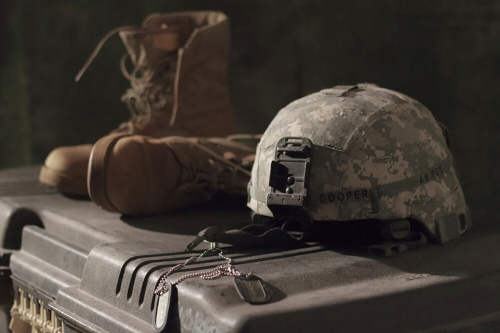How These Owners of Dog-Training Businesses Teamed Up to Help Veterans in Need
Gabrielle Bienasz
Innis, owner of Naples, Florida-based Coastline K9, is now one of three business owners connected by nonprofit Rescue 22 Foundation. The organization (also based in Naples) raises funds to subsidize the cost of training service dogs, which can run from $40,000 to $60,000 between coaching, travel, and integrating a dog into a new home. Rescue 22 covers about half the cost, and the business owners volunteer the other half. The dogs can do everything from help interrupt a panic attack to assist with mobility for amputees. Here’s how the team, which has trained 34 dogs for veterans for free since 2017, came together and pulled it off.
The problem
More than 6,000 veterans died by suicide in 2019, according to the U.S. Department of Veterans Affairs 2021 National Veteran Suicide Prevention report. Research suggests that specially trained dogs can help with post-traumatic stress disorder, which is more common among those in the military than in the general U.S. population. But costs can be prohibitive, and there aren’t nearly enough available trainers for all the veterans in need. Those problems spurred John Devine – former Navy SEAL, owner of Devine K9s, and trainer for Rescue 22 – to train about a half-dozen service dogs for free for fellow veterans.
Devine knows first-hand how badly veterans need support after returning to civilian life. When he got home from the Navy in 2015, he says, he didn’t have real direction. While on active duty, he had been a SEAL K9 handler, leading dogs that saved the lives of his team members by sniffing out IEDs. So he started helping friends and family with their pets. His free weekly training class in a park in San Diego grew to a side hustle, and then to a full-fledged business based in Los Angeles County. “Doing this is what helped me have a mission and a purpose again,” he says, adding that he’s seen a similar effect for clients of the business.

How it came together
Devine got to know Innis because they ran in the same small circle of special operations alumni who trained dogs. And Innis had previously met Angela Connor, who now serves as chair of the board of Rescue 22, after her son contacted him to ask about being a dog handler with the Army Rangers. When Innis told Connor about his idea, they thought, why not try to reach more veterans with a fully established effort?
Connor had a background in nonprofit work, and her father and uncle struggled with PTSD from the Vietnam War. “What has sparked my passion is wanting to ensure that the individuals who served the past 20 years didn’t have the same experience my family members did,” she says. In July 2018, the founders formalized Rescue 22, which also comprises a third business, Ridgeside K9 Carolinas.
The nonprofit started doing small events like auctions, and has worked with larger and larger companies, including Ford, which made Rescue 22 part of its Proud to Honor military-charity program. Last month it also got its largest individual contribution to date, of $25,000. Still, Connor says it’s been harder than she expected to raise interest about the issue. For one thing, many people incorrectly assume that the Veterans Affairs department subsidizes service dogs.
Finding veterans who want dogs is another matter. Connor has 10 people on the active waiting list and 24 on the “sub” waiting list, whom she and the other business owners regularly call to offer support while they’re waiting for an opening. This year, they’re training and integrating 14 dogs. Connor doesn’t get a paycheck and has a day job as an education financial consultant. Ninety-five cents of every dollar donated goes back to the veterans, while the rest goes to expenses, such as maintaining the website and accounting, she says. Rescue 22 has no full-time employees.
For Innis, working with service dogs and supporting Rescue 22 hasn’t helped only the other veterans. “You have to stabilize yourself before you can help stabilize other people,” he says. When he left the Army, he relates, he took a dog with multiple behavioral issues home from a training company where he volunteered and rehabilitated him. “That dog blossomed beautifully,” he says. “But that dog ended up actually building me.”








